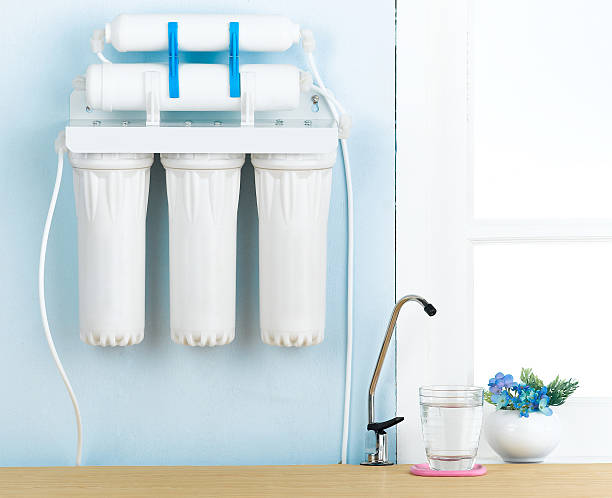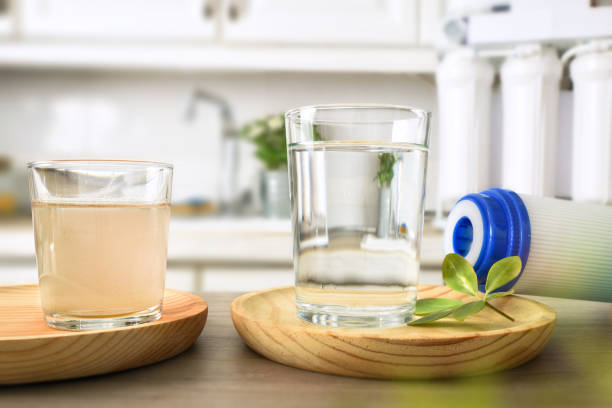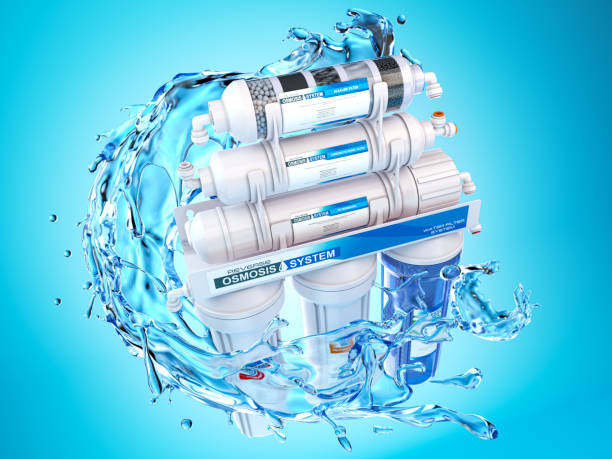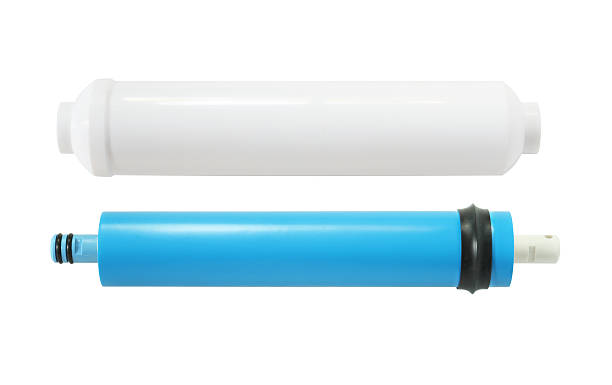Hello, this is a new vision of water treatment, today Susan comes to answer some questions for you about water purification equipment in water plants, I hope to be able to help you.
The management of reverse osmosis equipment during shutdown, do you know what to do? Reverse osmosis equipment is a kind of water treatment equipment that utilizes a high-pressure pump to separate water molecules from a solution, which is widely used in industry, medical treatment, drinking and other fields. The advantage of reverse osmosis equipment is that it can effectively remove organic matter, inorganic matter, bacteria, viruses and other impurities in the water, and improve the quality and quantity of water. However, reverse osmosis equipment also has a disadvantage that it can not stop running for a long time, otherwise it will lead to the decline of the performance of the equipment, or even damage.

So, what matters do you need to pay attention to during the shutdown of reverse osmosis equipment? How to properly manage and maintain it? Today, I will share some professional knowledge and experience with you, and I hope it will help you.
Management methods during the shutdown According to the length of the shutdown, the management methods of reverse osmosis equipment can be divided into the following three kinds:
daily shutdown (0-48 hours) daily shutdown refers to the situation in which the reverse osmosis equipment temporarily stops running after normal operation for some reasons, generally not more than 48 hours. In this case, the management of reverse osmosis equipment is relatively simple, mainly the following steps: stop water inlet and water production, close the water inlet valve, water production valve and concentrated water valve, keep the reverse osmosis membrane element filled with water to prevent membrane element drying and microbial growth. Flush the reverse osmosis system with low-pressure water to remove impurities and concentrated water from the system to prevent clogging and contamination of the membrane elements. Repeat the above operation every 24 hours to keep the reverse osmosis system clean and moist.

Short-term shutdown (2-25 days) Short-term shutdown refers to the situation where the reverse osmosis equipment stops running for a long time after normal operation for some reasons, usually between 2-25 days. In this case, the management method of reverse osmosis equipment is more complicated, mainly the following steps: stop the water inlet and water production, close the water inlet valve, water production valve and thick water valve, keep the reverse osmosis membrane element filled with water to prevent the membrane element from drying and microbial growth. Use reverse osmosis product water to prepare a good concentration of 0.5-0.7% formaldehyde solution, adjust the pH between 5-6, as a preservative. Start the cleaning pump to flush the reverse osmosis system at a flow rate of 45-58m3/h. Fill the reverse osmosis membrane elements and pipelines with the anticorrosive agent to prevent the membrane elements from oxidation and biological contamination. Repeat the above operation every 5 days to keep the reverse osmosis system clean and anticorrosive.

Long-term shutdown (more than 25 days) Long-term shutdown refers to the situation where the reverse osmosis equipment stops operating for a long period of time after normal operation for some reasons, usually more than 25 days. In this case, the management method of reverse osmosis equipment is more troublesome, mainly the following steps: stop the water inlet and water production, close the water inlet valve, water production valve and thick water valve, keep the reverse osmosis membrane element filled with water to prevent the membrane element from drying and microbial growth. Use reverse osmosis product water to prepare a good concentration of 0.5-0.7% formaldehyde solution, adjust the pH between 5-6, as a preservative. Start the cleaning pump to flush the reverse osmosis system at a flow rate of 45-58m3/h. Fill the reverse osmosis membrane element and piping with the anticorrosive agent to prevent the membrane element from oxidation and biological contamination. Remove the reverse osmosis membrane element from the pressure vessel, rinse it with clean water, put it into a plastic bag, add the preservative and seal it for storage to prevent the membrane element from being affected by the outside world. Rinse the pressure vessel and piping with clean water, add preservatives, and keep them closed to prevent the pressure vessel and piping from corrosion and contamination.

Precautions during shutdown During the shutdown of reverse osmosis equipment, in addition to operating in accordance with the above management methods, attention should also be paid to the following aspects: when using preservatives, wear protective gear, avoid contact with the skin and eyes, and prevent poisoning and irritation. When using preservatives, pay attention to the expiration date of the preservative, expired preservatives can not be used, otherwise it will affect the preservative effect. When using the preservative, pay attention to the concentration and pH value of the preservative, too high or too low concentration and pH value will cause damage to the reverse osmosis membrane element. When using the preservative, pay attention to the temperature of the preservative, too high or too low temperature will affect the stability and activity of the preservative. When using the preservative, pay attention to the cycle time of the preservative, too long or too short cycle time will affect the preservative effect. When using preservatives, pay attention to the storage conditions of preservatives, avoid direct sunlight and high temperature and humidity, to prevent deterioration and failure of preservatives. When using preservatives, pay attention to the amount of preservatives, according to the instructions, do not over or under, to prevent waste and insufficiency. When using preservatives, pay attention to the discharge of preservatives, in accordance with environmental regulations, do not discharge arbitrarily, to prevent pollution of the environment and harm to the ecology. Preparatory work before restarting During the shutdown of reverse osmosis equipment, if it is necessary to restart the operation, the following steps should be carried out first: check the various parts of the reverse osmosis equipment, whether there is any damage, loosening, leakage and other abnormalities, and replace or repair them in a timely manner. Check the reverse osmosis equipment power supply, water, instrumentation, valves, etc., whether the normal work, timely adjustment or replacement. Check the water quality of the reverse osmosis equipment, whether it meets the requirements of the reverse osmosis membrane element, timely treatment or replacement. Check the anticorrosive agent of the reverse osmosis equipment, whether there is expiration, deterioration, failure, etc., timely replacement or treatment. Flush the reverse osmosis system with clean water to discharge the anticorrosive agent completely and prevent the anticorrosive agent from affecting the reverse osmosis membrane element and product water. Prepare a citric acid solution with a concentration of 0.1-0.2% with reverse osmosis product water and adjust the pH between 3-4 as a cleaning agent. Start the cleaning pump to clean the reverse osmosis system at a flow rate of 45-58m3/h. Fill the reverse osmosis membrane element and pipeline with the cleaning agent to remove the scale and sediments on the membrane element.

Flush the reverse osmosis system with clean water and discharge the cleaning agent completely to prevent the cleaning agent from affecting the reverse osmosis membrane element and product water.
Restore the normal operation of the reverse osmosis equipment, adjust the operating parameters, test the operating effect, and ensure the performance and quality of the reverse osmosis equipment. The above is my introduction to the management methods and precautions during the shutdown of reverse osmosis equipment, I hope it will help you. If you want to know more about the knowledge and skills of reverse osmosis equipment, welcome to send comments, I will reply to your questions in time. Thank you for reading!







 RO Low Pressure Membrane: Widely Used in Multiple Fields to Create Efficient, Energy-Saving Water Solutions
RO Low Pressure Membrane: Widely Used in Multiple Fields to Create Efficient, Energy-Saving Water Solutions
 RO membrane high-pressure membrane: a wide range of applications show strong adaptability
RO membrane high-pressure membrane: a wide range of applications show strong adaptability
 Do you really understand the difference between high pressure reverse osmosis membranes and low pressure reverse osmosis membranes?
Do you really understand the difference between high pressure reverse osmosis membranes and low pressure reverse osmosis membranes?
 Water purifiers --Pure water equipment water rate reduction is what happened?
Water purifiers --Pure water equipment water rate reduction is what happened?